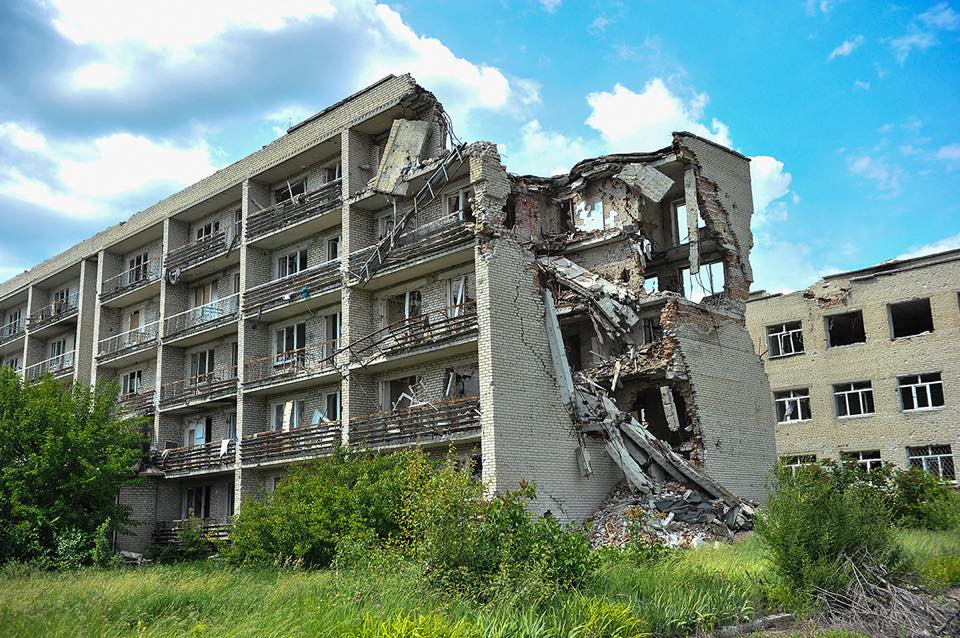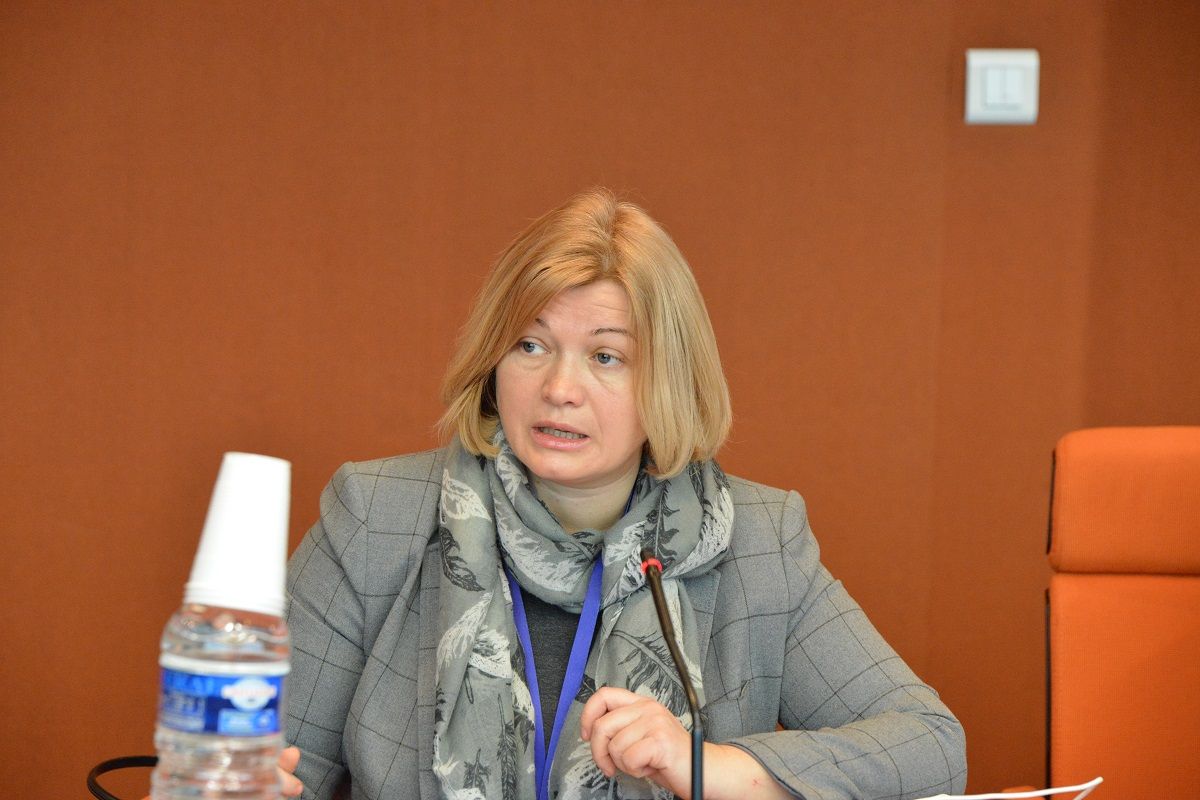
Awaiting environmental Armageddon
Besides the fact that Ukraine has joined the Paris Climate Agreement and the latest twists and turns regarding Lviv’s waste landfills row, environmental issues in Ukraine have long been back-shelved. Well, they shouldn’t be.
Recently, Ukraine's environmental problems suddenly burst out into the media space as Deputy Minister for Temporarily Occupied Territories and Internally Displaced Persons George Tuka predicted an ecological disaster in Donbas. His statement was sharply refuted by Donetsk region’s Governor Pavlo Zhebrivsky. And so the clash started...
Tuka said that the flooding of a large number of coal mines in the areas of Donetsk and Luhansk regions beyond Kyiv’s control – the mines which, moreover, contained the remains of radioactive materials -leads to water contamination and an increase in the radiation level in natural waters. As a result, as of today, 88% of the reserve sources of drinking water in the occupied areas of Luhansk region are already unsuitable for use. And the further spread of polluted water can lead to an area of 15,000 square kilometers [border regions of Ukraine and Russia] being affected. "According to the report regarding the humanitarian disaster, prepared by the National Academy of Sciences, Donbas is doomed. Processes have started which cannot be leveled," George Tuka said.
Therefore, in his opinion, we should now think about resettling people. It seems this was exactly the statement, which caused indignation on the part of the region’s governor. "Are there environmental problems in Donetsk and Luhansk regions?" Of course, there are. Do terrorists flood Ukrainian mines in the areas they have occupied? Yes, they do. Is it dangerous for the region? Yes, there are risks. And if George Tuka in this way wished to draw the attention of the international community to the issue, let him specify what exactly he meant," the governor said, adding that such problems are gradually being solved in the Ukraine-controlled territory. He recalled that on July 2, Ecology Minister Ostap Semerak measured the radiation level in the government-controlled city of Bakhmut, and it was within the allowed range.
In turn, Tuk parried that one should not pretend nothing is happening and ignore the problem, since the issue of the region's environmental problems is "extremely complex."
His opinion is shared by Parliament Vice Speaker, Ukraine’s humanitarian envoy to the Trilateral Liaison Group in Minsk on Donbas settlement, Iryna Gerashchenko. "It seems to me that now environmental problems of Donbas are coming to the fore following security and humanitarian components. Global attention is crucial here," she noted.
Indeed, Donbas is not only territories controlled by the Ukrainian government, while environmental issues in the region are not only those with radiation levels in Bakhmut or Mariupol. For example, there are also threats of chemical contamination of both soil and drinking water.
The problem should be recognized that any contamination of “DPR” and “LPR”-controlled territories will remain a looming threat to all no matter how much Ukraine does to tackle environmental problems in the areas it effectively controls. For the past three years, none of Ukraine’s controlling agencies have been able to assess the environmental damage caused by large enterprises located in uncontrolled territories, or check the actual condition of flooded mines and treatment facilities, which earlier allowed reducing the harm to the ecosystem. The thing is, the experts simply have no access to the sites in interest. Experts do not undertake to assess air and groundwater pollution (both because of uncontrolled emissions of factories and as a result of the destruction of local national natural parks). In addition, no one can accurately predict the negative effect of all that unexploded ordnance strewn across the Donetsk and Luhansk farmland, and what will be the aftermath of their "decomposition" as their components will eventually end up in groundwater.

However, it would be unfair to claim that the authorities don’t take the challenge seriously. After all, it is obvious that it is impossible to conduct an environmental assessment in uncontrolled territories by Ukrainian experts.
Minister for Temporary Occupied Territories and IDPs Vadym Chernysh sees the resolve in attracting international organizations to tackling the problem. "Environmental issues in Luhansk and Donetsk regions should be put on the agenda of the Minsk talks," he said.
"The topic of environment and a possible manmade disaster in Donbas will be one of the key issues at the meeting of the Ukraine-EU Association Parliamentary Committee which will be held in Ukraine this autumn," Iryna Gerashchenko said.
However, the fact that the OSCE SMM has been warning of a possible environmental disaster in Donbas say since year-start has not brought Ukraine much closer to solving the problem. To date, the Ecology Ministry with the OSCE support has only launched a project to provide for a complete inventory of sites representing environmental and manmade threat in Donetsk and Luhansk regions. In addition, according to Minister of Ecology Ostap Semerak, his ministry along with the State Agency of Water Resources is ready to join the process of setting up an automated water monitoring system in Donetsk region in the framework of the project to introduce an automated pollution monitoring system.
Unfortunately, these efforts could remain a drop in the sea. That’s especially if we take into account that Donbas is in fact not the only region of Ukraine that faces environmental problems. Both central and local authorities should also pay more attention to the amber-rich areas where, as a result of uncontrolled extraction, prospectors has unearthed radioactive layers of soil contaminated since the time of the Chornobyl nuclear disaster. By bringing these soil layers up on the surface, amber hunters seem not to care at all about the increased radiation level in Polissia forests. No less important is the problem of forest fires, especially in the aforementioned green areas. No matter how hard the State Emergency Service reports on its successful efforts in extinguishing forest fires in the radiation risk areas, the lesson of 1986 is still alive in the memory of all Ukrainians.
Besides, all government actions aimed at resolving environmental problems should be as clear to the Ukrainians as possible, while corresponding national programs should also be timely. After all, what's the use in raising funds for the untimely attempts to put out the “fire” if the environmental Armageddon has already come? We should prevent this fire from "igniting" in the first place.
Tetiana Stezhar

